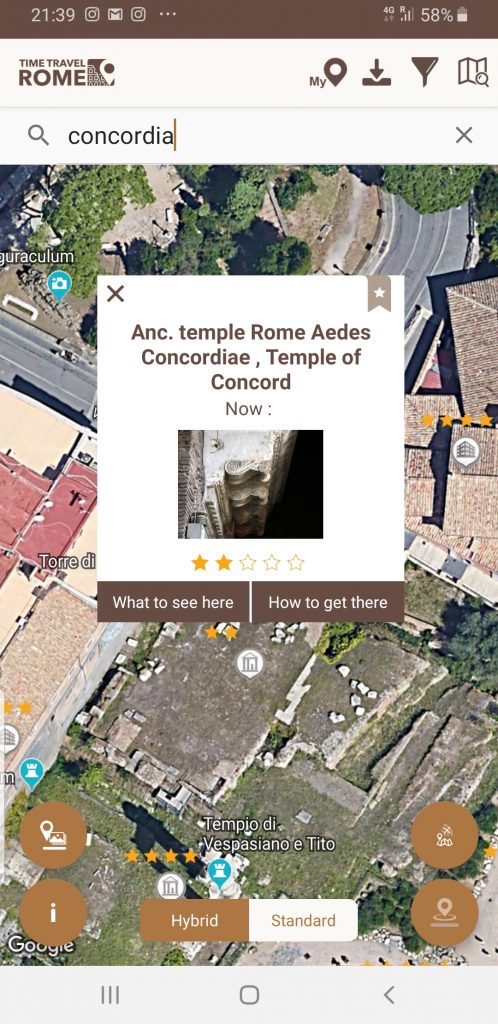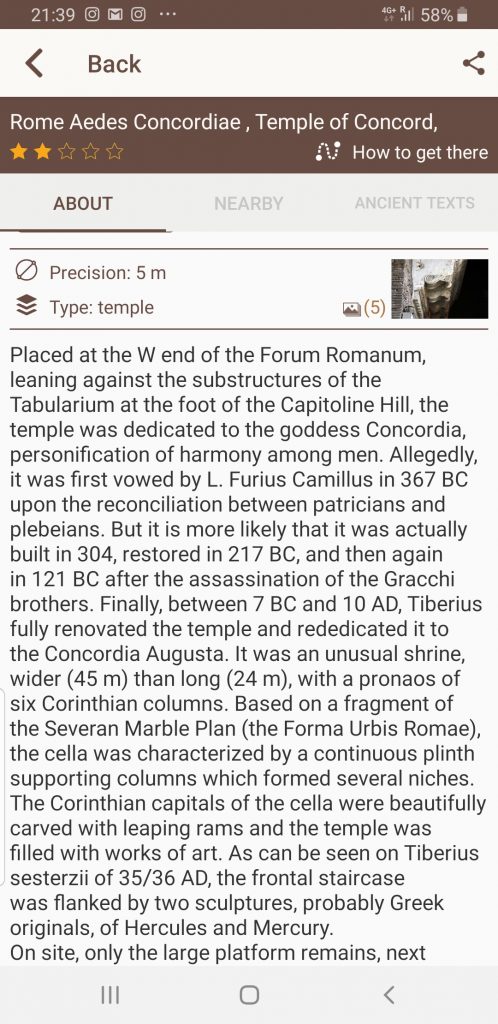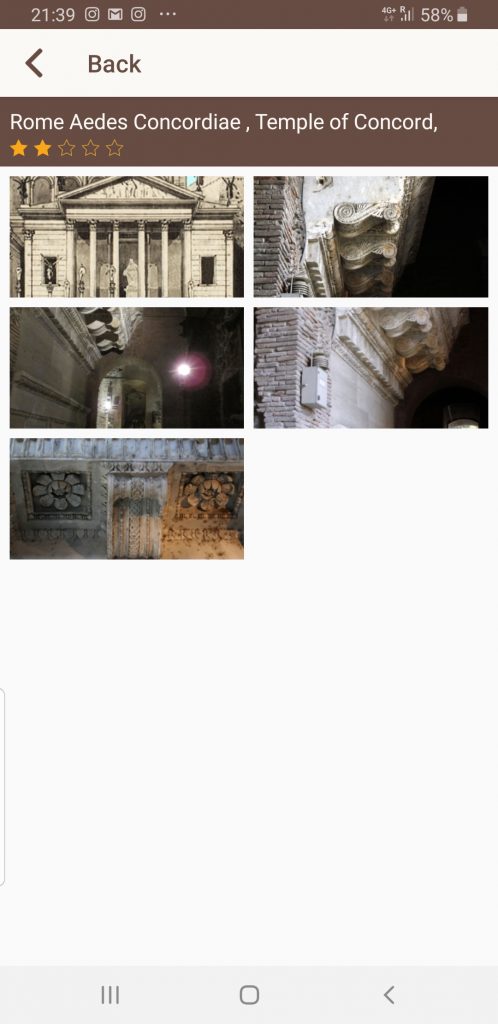Placed at the West end of the Forum Romanum, leaning against the substructures of the Tabularium at the foot of the Capitoline Hill, the temple was dedicated to the goddess Concord, personification of harmony among men. The temple has been renovated several times, the last renovation being held under Tiberius. The exterior of the temple was then entirely covered with marble, making the temple one of the most beautiful temples of Rome. During republican times, the temple served for important sessions of the Senate, as on the occasion of the speech of Cicero in 63 BC to denounce the Catilina plot. During the imperial period the temple became the place of exhibition of the several masterpieces of ancient art. We will explain why.
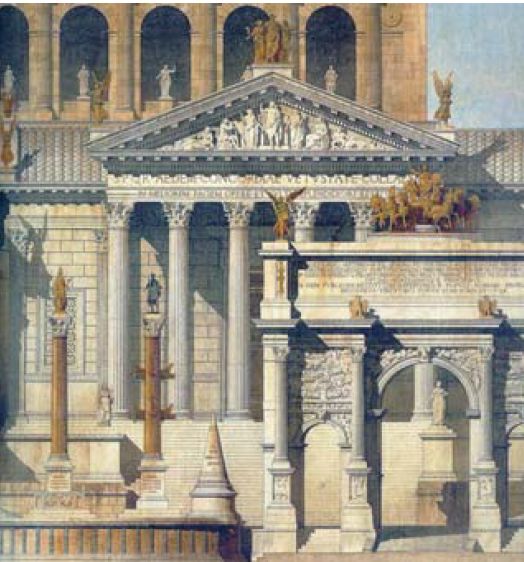
A few words about temple’s history
Allegedly, the temple was first vowed by L. Furius Camillus in 367 BC upon the reconciliation between patricians and plebeians. But it is more likely that it was actually built in 304, restored in 217 BC, and then again in 121 BC after the assassination of the Gracchi brothers. Finally, between 7 BC and 10 AD, Tiberius fully renovated the temple and rededicated it to the Concordia Augusta. It was an unusual shrine, wider (45 m) than long (24 m), with a pronaos of six Corinthian columns. Based on a fragment of the Severan Marble Plan also known as the Forma Urbis Romae, the cella was characterized by a continuous plinth supporting columns which formed several niches. The Corinthian capitals of the cella were beautifully carved with leaping rams and the temple was filled with works of art. As can be seen on Tiberius sestertii of 35/36 AD, the frontal staircase was flanked by two sculptures, probably Greek originals, of Hercules and Mercury.
A temple like no other: a Museum of ancient art
In addition to its superior beauty and its unusual shape, the temple stands out from other temples in Rome for another reason, namely because of a large number of ancient art masterpieces that were preserved inside of it. Here is a short list of masterpieces that were kept in the temple of Concord, as listed in the “Pliny on Art and Society” by Jacob Isager, published by Routledge in 1992:
Bronze statues and groups of statues:
- Latona with the Apollo as child and and Diana by Euphranor
- Jupiter, Minerva and Ceres by Sthennis
- Mars and Mercury by Piston
- Apollo and Juno by Baton
- Aesculapius and Salus by Niceratus
Famous paintings:
- The bound Marsyas by Zeuxis
- Dionysus by Nicias
- Cassandra by Theodorus
Besides that, the Temple hosted a statue of Vesta that was sold to Tiberius by Rhodos, four elephants made of obsidian dedicated by Octavian and a sardonyx that once belonged to Polycrates of Samos. One may ask why so many masterpieces were stored in the Concordia temple and not elsewhere. The answer to this question is given to us by the sestertius struck under Tiberius.
If you like this blog post, you will probably like our mobile app TimeTravelRome, the most comprehensive mobile app about ancient Rome. Learn more about it here.
The Temple of Concord on the Tiberius Coin
Indeed, a Sestertius struck under Tiberius helps us to understand why the temple was chosen for the conservation of spectacular masterpieces of the ancient art. One can see that the central entrance of the temple is flanked by two large rectangular windows that have lighted the interior space of the Temple, thus making it suitable for the exhibition of dark bronze statues. The statue of Concordia, executed in bright marble, provided a stunning contrast to other Greek statues executed in dark bronze. It is likely that the temple – in its renovated form –was designed by Tiberius architects as an exhibition room aimed at glorifying emperor’s artistic taste, financed by German military campaigns. The coin below shows perfectly two big rectangular windows on the facade of the temple:

Unfortunately, we can’t speak of “coins” (in plural) with the effigy of the temple of Concord, because its appearance is known mainly thanks to just one monetary issue, that of Tiberius. However, this single coin is exceptional in terms of the details, which allows us to imagine very well the actual appearance of the temple.

Two other examples of this rare coin can be seen on the websites of the Ashmolean and of the British museums.
What to see there now:
On site, only the large platform remains, next to the temple of Vespasian and Titus, but one of the inner capitals is on display at the Forum Antiquarium. While visiting the Musei Capitolini, it is also possible to reach the great corridor of the Tabularium, overlooking the Forum, and admire a fine piece of the marble architrave of the temple, which is there preserved.
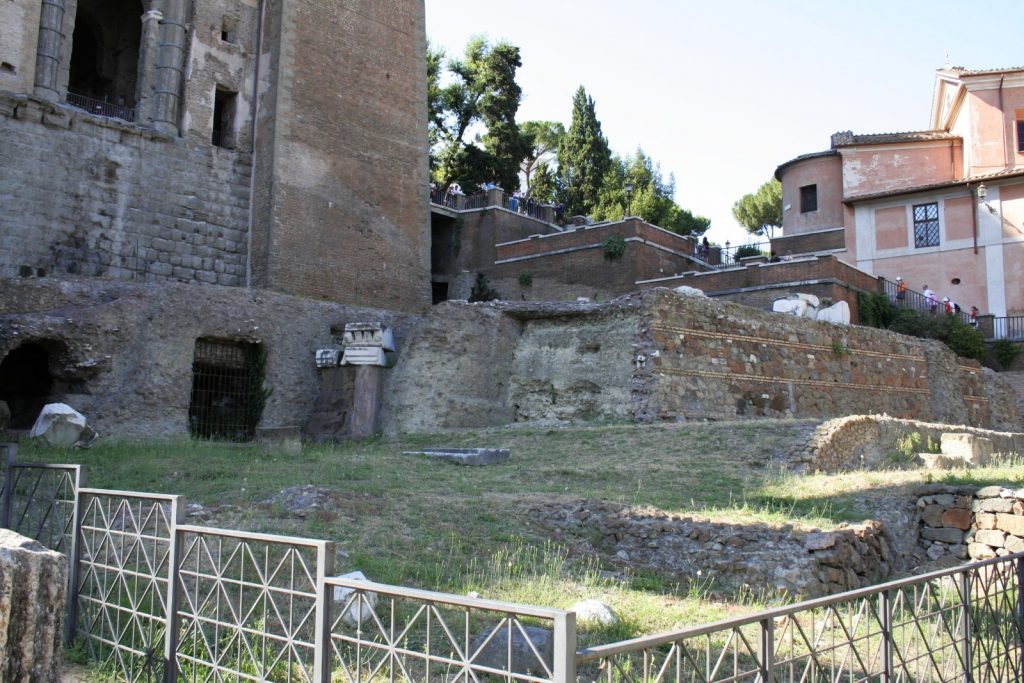
Temple of Concordia on Timetravelrome app:
To find out more: Timetravelrome.
Author: TTR. The write-up about the Temple of Concord was done by Alexander Meddings.
Sources:
- “Pliny on Art and Society” by Jacob Isager, published by Routledge in 1992.
Header photo: Numismatica Ars Classica NAC AG; Auction 114; lot 599. Used by permission of NAC. and Reconstruction of the Temple of Concord. From the article “Les trois temples de l’extrémité nord-occidentale du forum romain : reconstitution architecturale et simulation topographique”. By Gérald Cariou. Article in the public domain.

